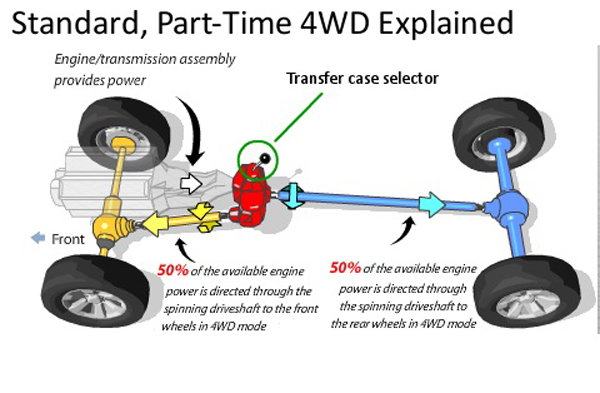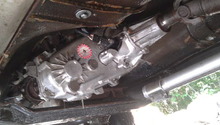Jeep Cherokee 1984-2001: General 4WD Information and Maintenance Schedule
To ensure that you can shift into 4WD during tight situations, make sure to follow some general maintenance procedures.
This article applies to the Jeep Cherokee XJ (1984-2001).
The Jeep Cherokee comes in two body styles: 2-door and 4-door. The body structure has been strengthened throughout the years, and the 1997 to present Cherokee models make a clear move toward smoother body lines, offering owners more attractive bumpers, flares, and moldings. The Jeep's 4.0-liter "Power Tech" engine delivers incredible power on and off the road. Other impressive components include high-power driveshafts, axles, as well as gearing, all of which promise the smoothest ride and handling characteristics of any other jeep on the market. Safety features include driver and passenger side air bags and anti-lock braking systems (ABS).
Jeep Cherokee's 4WD
Part-Time vs Full-Time 4WD System
"Full-time" 4WD essentially means that 4WD is engaged all of the time, regardless of whether the surface you're driving on is wet, dry, icy, greasy, smooth, etc. Because full-time 4WD systems have a center differential, all four wheels are able to be engaged without damaging drivetrain components.
"Part-time" 4WD offers additional traction for times when you really need it, which is usually the case when driving on loose or slippery surfaces. Generally speaking, "part-time" is best saved for off-roading, and this 4WD system should NOT be engaged for on-road use because of its lack of a center differential.

How and When to Use 4WD
You can shift into "4WD high" while moving at speeds of up to 45 to 55 mph; however, you'll need to release the gas pedal for a moment while you quickly pull the gear shifter back into the proper position. You can also stop your Jeep, put your vehicle into neutral, and then shift into either 4H or 4L, depending on your needs.

Note
Some Jeep owners suggest that you not shift into "4WD low" while driving or "rolling." Only slip into 4WD when road conditions deteriorate completely, or your Jeep is facing wet conditions.
How to Tell if 4WD is Engaged
The easiest and quickest way to tell if your Jeep is in 4WD is by checking the dashboard. If the "4WD" light comes on, your Jeep is in 4WD. To determine if you're in 4WD manually, switch your Jeep into 4WD, and then drive it in a tight circle around an empty location where there is no traffic. If your front end attempts to bite and grab at the road in front of you, your Jeep is in 4WD.

General 4WD Scheduled Maintenance
Make sure to have your Jeep tuned up regularly.
- Change the engine oil every 3,000 miles. It's not necessary to purchase expensive engine oil; any high-quality engine oil with a zinc additive should suffice.
- Have your spark plugs replaced as needed.
- Replace air filters when they become dirty.
- Replace coolant using a 50/50 coolant mix (no water) as the levels run low.
- Change the transfer case fluid at least every 35,000 to 45,000 miles.
For basic maintenance, always make sure the fluids are good as well as topped up, the battery has a good charge, the distributor cap and rotor are in good shape. If your Jeep has a lot of miles on it, be sure to change the fluids and filters regularly, stay ahead of your tune-up schedule, replace your spark plugs at the first sign of damage, and pay attention to any check engine lights or major components for problems, which includes the transmission. Fluids are the life blood of your Jeep, so have them replaced as needed!
Common Issues
Why am I stuck in 4WD?
If stuck in 4WD while on the road, the quickest fix is to remove your foot from the accelerator pedal for a second and then apply it back. This trick should disengage the front axle, allowing your 4WD system to become unstuck. It's highly recommended that you have your transfer case checked for damage or excess wear if this issue occurs. Also, have the transfer case fluid checked and/or replaced.
Why won't 4WD disengage?
The fork in the axle might not be moving freely when you shift into 4WD, or there might be a problem with the sleeve in the axle. Have a professional mechanic inspect your Jeep's Command-Trac system for damage.
Related Discussions
- Stuck in 4WD - CherokeeForum.com
- Tune-Up Maintenance Tips - CherokeeForum.com






